2019 Spring
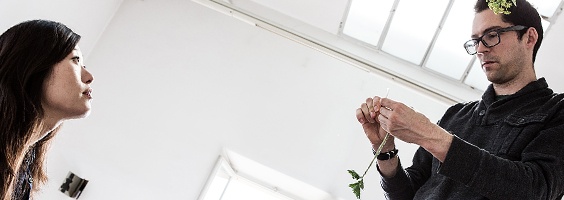
Thursday, January 31 7:00-9:45pm
In The CSULB Design Department Duncan Anderson Gallery
Kim Karlsrud & Daniel Phillips
Commonstudio
There Is No Such Thing As A Vacant Lot: Experimenting With And Within The Urban Commons
How might creatives better engage with the social, ecological, and spatial complexities of cities? Commonstudio founders, Kim Karlsrud and Daniel Phillips will share a series of urban interventions that examine the intersection of art, design, and science.
Commonstudio is a collaborative creative practice exploring the complex ecologies of the urban landscape. The urban realities we face today are fantastically complex. They require new ways of seeing, knowing, and acting. As creative practitioners we attempt to explore these realities and our potential role in engaging them. We view urban landscapes from many scales and perspectives in an attempt to understand the conditions of the contemporary metropolis as a complex ecosystem. In the context of our "post-wild" world, reconciling “nature” and “city” into a more seamless space of understanding becomes an increasingly urgent challenge. We believe cities can become more vibrant, resilient, and responsive from the bottom up, and we embrace this challenge with a dual spirit of the serious and the playful. By using design and public practice as a framework for action, we view our role as collective enablers, seeking overlaps between the human and the non-human, the domesticated and the feral, the visible and the invisible. For us this means embracing rather than erasing the existing legacies and conditions that define the city, however messy they might be.
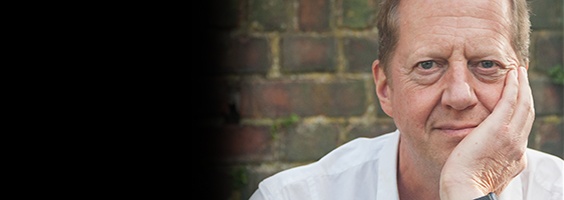
Thursday, February 7, 7:00-9:45pm
In The CSULB Design Department, Lecture Hall 112
Wolfgang Joensson
VIEWSDESIGN
Iconic Design
Some products have achieved an iconic status. They are recognized by many people and are the first that come to mind when talking about a product genre. During the lecture, Mr. Joensson will explain the term iconicity, show examples and explain how objects can become iconic.
Wolfgang Joensson is a South African born German industrial designer and educator. He lives in Paris, France and Corona del Mar, CA. Throughout his career he has worked with international clients ranging from small startup companies to industrial giants, creating award-winning product, graphic, interface and package design which can be found in shops and museums worldwide. He is also the co-founder of a start-up company for sleep technology out of San Diego, CA, and a book author. He likes cocktails, cooking, culture and conversation with clever people.

Thursday, February 14, 7:00-9:45pm
In The CSULB Design Department Duncan Anderson Gallery
George Escobar
Advent Film Group
Designing for Cinema: Beyond the Page, Set, Screen, and In-Between
Every word on a script leads to a visual design approach. Bringing that design to life on the set isn’t just about constructing the physical environment, costumes, and props. Designing for cinema encompasses tone, movement, and emotion. And it doesn’t stop there. Post-production elements add other layers of design, including color grading, sound mixing, and music scoring. The pacing of scene, the cadence of the dialogue, and the rhythm of the cuts are all part of the grand design. This lecture will cover how a filmmaker incorporates all of these elements under the pressures of time, budget, and personalities. “Fasten your seat belts. It’s going to be a bumpy night."
GEORGE ESCOBAR co-wrote and co-directed Oscar nominated “ALONE YET NOT ALONE” (for Best Original Song) and “THE ISAIAH 9:10 JUDGMENT," which was Amazon’s No. 1 faith DVD for over 75 weeks in 2012-13. George also produced and directed “COME WHAT MAY," distributed by Sony/Provident Films, produced “EVERY BOY NEEDS A HERO," released by Capitol Distribution, and most recently co-wrote & produced the upcoming movie, “THE WORLD WE MAKE.”
His next film projects include two historical ’true-story’ features: TRAPPED, a Holocaust survivor story about teenager Anita Dittman, who escapes twice from Nazi prison camps as she sought to reunite with her mother. TRAPPED recently won 1st Runner Up at the Kairos Pro Award. Escobar’s other film, MISSILEMAN, is about Wallace Clauson, America’s top secret weapon during the Cold War.
George was a producing fellow at the American Film Institute Conservatory and co-founder of Advent Film Group. Previously, he was Vice President of Product Development for Discovery Networks, Executive Director of AOL/Time Warner. He holds seven U.S. patents for interactive design and video streaming technologies and is a regular speaker at many film festivals, workshops, and film schools.
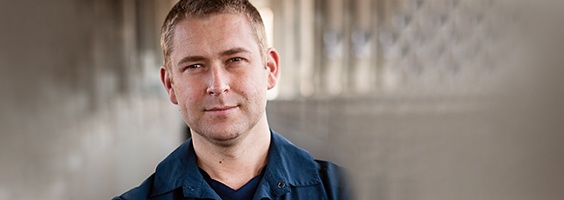
Thursday, February 21, 7:00-9:45pm
In The CSULB Design Department Duncan Anderson Gallery
Adam Mefford
Currency / /
Tools for Shaping a Career Which Suits You
Good news: Creativity is more valuable in the world than ever before.
Bad news: You must draw your own map for the journey ahead.
Good news: This talk will share some practical ideas for navigating the start of your career.
Adam Mefford is an entreprenuer and product designer. He also runs Currency which is an organization with the mission to support the success of creative entrepreneurs in Los Angeles. Currency is a future-facing network which recognizes the relevancy of diverse human capital and supports all levels of entrepreneurship through public events and a private social network localized to Los Angeles.
Adam graduated in 2009 from Art Center College of Design with a degree in Product Design. He was the student representative to the Industrial Designers Society of America (IDSA) for 2003 and followed that by founding an entrepreneurs group for the Art Center community in 2004. In 2005 he attended the TED conference in Monterey which inspired the monthly event series Mindshare LA, which he cofounded and directed from 2006–2011. He was involved in the annual Art Center Summit for Sustainable Mobility and stays alert to how networked transportation services will transform our lives in the coming years.

Thursday, March 7, 7:00-9:45pm
In The CSULB Design Department Duncan Anderson Gallery
Vijendra “VJ” Nalwad
Vice President of Engineering and Quality, Belkin International
Deep Collaboration
Realizing the full potential of the Industrial Designer’s product vision often requires deep and early collaboration with cross functional teams involving multiple engineering functions. The intent of this lecture is to share with the students my experience and insights to streamline that journey and provide tools to improve the quality of execution.
VJ Nalwad is passionate about enabling teams to realize their full potential and succeed as a team. He leads the Engineering and Quality organizations for Belkin International, a manufacturer of consumer electronics products based in Playa Vista, California. His responsibilities include the realization of all hardware products, retail packaging and the company’s New Product development process.
He has a bachelor’s degree in Mechanical Engineering and a master’s degree in Industrial Engineering.
Having worked with accomplished and talented Industrial Designers most of his professional life, he recognizes the importance of effective and efficient, early collaboration between cross functional team members to fulfill the product vision and exceed consumer expectations. Driving the right tradeoffs between competing priorities and delivering on the right combination of features, quality and cost, on time and within budget in the highly competitive consumer electronics space, is a complex exercise. Industrial Designers have a key role to play in this process and the intent of this lecture is to shine a light on how they can do so successfully.
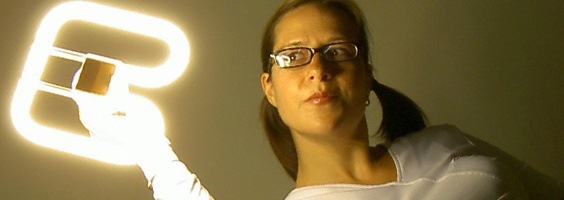
Thursday, March 21, 7:00-9:45pm
In The CSULB Design Department Duncan Anderson Gallery
Carla Diana
Designing in the Fourth Dimension
While we can confidently say that the future is here in terms of technological advances, we are a long way from truly understanding its impact. To do so, we need to tinker, explore, and prototype the data-infused experiences that make the physical world around us unfold over the fourth dimension–time. In this talk, Carla Diana will discuss the impact of 4D Design, from interactive objects and clothing to mixed reality and robotics, looking at the critical work that today’s design students will do to shape the world of tomorrow.
Carla Diana is a designer, author and educator who explores the impact of future technologies through hands-on experiments in product design and tangible interaction. She has designed a range of products from robots to connected home appliances, and her designs have appeared on the covers of Popular Science, Technology Review and the New York Times Sunday Review.
Carla has been granted the honor of creating the 4D Design program at the Cranbrook Academy of Art, serving as its first Designer in Residence; it will begin accepting students in Fall 2019. She is an ongoing collaborator with the Socially Intelligent Machines Lab at the University of Texas, Austin, where advances in artificial intelligence and machine learning are manifest in expressive robots.
Carla writes and lectures frequently on the social impact of robotics and emerging technology and created the world’s first children’s book on 3D printing, LEO the Maker Prince. She is a coauthor of a forthcoming book on smart object design to be published by Harvard Business Review Press and currently cohosts the Robopsych Podcast, a biweekly discussion around design and the psychological impact of human-robot interaction.
She holds a B.E. in Mechanical Engineering from the Cooper Union and an M.F.A. in 3D Design from the Cranbrook Academy of Art.
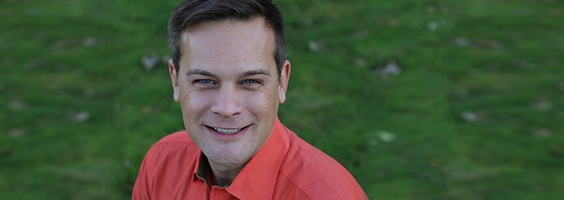
Thursday, March 28, 7:00-9:45pm
In The CSULB Design Department, Lecture Hall 112
Rich Altherr
President and Owner of Nature Comes Standard
Biomimicry: The Spark for the Future of Regenerative Automotive Design
Biomimicry, the conscious emulation of Nature, has the horsepower to turn a 3.8+ billion year evolutionary toolbox into sustainable and regenerative design solutions. Rich Altherr, an automotive engineer and biomimicry specialist, takes us on a road trip highlighting how biomimicry can steer the design of automotive products, processes, and systems into Earth’s victory lane.
I am the President and Owner of Nature Comes Standard LLC, a biomimicry engineering research and design consultancy. I am also the founder of the nonprofit Biomimicry Detroit which inspires (re)connection with nature, intellectual education, civic collaboration, and social activities in the Detroit-metro Michigan area. Nature has been an integral part of my Michigan upbringings from building tree forts as a child to living along the water’s edge. In contrast, I grew up with a strong affinity for cars, leading me to pursue a mechanical engineering bachelor’s degree from Purdue University and a mechanical engineering master’s degree from the University of Michigan-Dearborn. Over 20 years, I worked at Chrysler, GM, and Ford; an automotive supplier; and for a brief time, ran my own online eco-friendly home goods business.
While I have worked in many facets of the automotive design, the majority of my experience encompasses the design and development of automotive suspension components at Chrysler/DaimlerChrysler/Fiat Chrysler Automobiles. In my continual effort to be ecologically mindful, I received my biomimicry certificate from Arizona State University (ASU) and a Biomimicry Specialist Certification (BSpec) from the Biomimicry 3.8. In 2020, I will complete a biomimicry master’s degree from ASU and Biomimicry Professional Certification (BPro) from Biomimicry 3.8. Besides my love of cars and nature, I enjoy kayaking, camping, hiking with Cheetah (my 9-year-old boxer-mix), or tinkering with my 1969 Dodge Charger and 1975 VW Beetle.

Thursday, April 11, 7:00-9:45pm
In The CSULB Design Department, Lecture Hall 112
Jonathan Spicer
Intense Lighting
Not Design
Jonathan Spicer is a product development professional versed in design, engineering and manufacturing with a medical product sales and electronics background. He currently develops award-winning lighting products from concept through production.
His specialties include product and process development, solid modeling, stress analysis, drafting, computer rendering and animation, graphic design, model building, metalsmithing, die casting, injection molded plastics, 3D printing, sheet metal manufacturing, CNC machining operations and setup (mill, lathe, laser, router). Computer program specialties include: Solidworks, PDM, AutoCAD, 3D Studio Max, Bunkspeed, MasterCAM, MetaCAM, FabriWIN, Adobe Suite and Microsoft Office Suite.

Thursday, April 18, 7:00-9:45pm
In The CSULB Design Department Duncan Anderson Gallery
Robin Hayashi
IDEO.Org
Robin is a Design Lead in IDEO.org’s San Francisco office. Equal parts communications designer and design strategist, she continuously pushes teams, partners, and herself towards design excellence. Her work often focuses on moving towards gender equality, whether through designing access to reproductive health for teens or giving women equal access to financial services. She infuses the design process with playfulness, and she believes that for every three hours talking, you should spend one hour making.
Prior to joining IDEO.org in 2015, Robin served as a graphic designer at MIT. Before switching to the social sector, Robin hopped around small design studios, developing packaging, brand design, and her claim to fame: CD packaging for the band Lake Street Dive. A tried and true east-coaster, Robin received her BFA in Graphic Design from the Rhode Island School of Design.
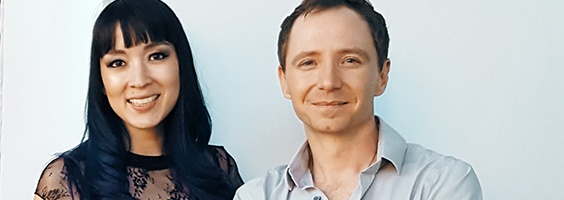
Thursday, April 25, 7:00-9:45pm
In The CSULB Design Department Duncan Anderson Gallery
Christian Bretz and Jessica Villarreal
VoyagerVR
Building Virtual Reality Arcade Games
Virtual reality has been called the final medium, because once we are finally able to recreate a world we can live in digitally, whether in realistic or abstract form, what medium could possibly come beyond that? The limitless potential of this technology inspired us to be one of the pioneers of this new industry, with the mission of creating applications that utilize the immersive power of VR while simultaneously giving the user a greater appreciation for the real world.
Join VoyagerVR founders Christian Bretz and Jessica Villarreal as they discuss their latest virtual reality project, a new VR arcade game set for release this year.
Christian and Jessica started VoyagerVR in late 2015 and were self taught during the process, and learned how to develop software in the Unreal Engine. In less than a year their first product “Stonehenge VR” became a museum exhibit at the Pacific Science Center in Seattle, WA, and the Museum at Prairiefire in Overland Park, KS.
In 2018 they partnered with the virtual reality arcade company “BluAtomVR” to create a 4-player VR arcade game called “The Time Machine Experience”. CSULB design student Casey Oetomo was a part of the development team and her contributions to the project will be on display as well.
The game will be playable at the lecture.
Christian Bretz
Christian's fascination with virtual reality started in high school when he completely remodeled his entire school in the Quake 2 game engine. Realizing virtual reality technology was still a ways off from being widely available, he instead chose a career in filmmaking as a director, writer, producer and actor. During this time Christian created one of the first viral video short films ever made, and started his own video production company with clients that included NBC Universal, Machinima and Lootcrate to name a few.
Although Christian's focus was on film, he remained an avid gamer and kept himself informed of the latest gaming and tech trends. At the E3 Expo in 2013, Christian had the opportunity to try out an Oculus DK1 and was instantly convinced that this was the future of several mediums, and that VR tech was finally meeting its potential. Not wanting the industry to advance without him, Christian decided to quit film making and dive into the world of VR.
With no gaming development background, Christian taught himself how to program for VR in the Unreal Engine and co-founded VoyagerVR. The company was founded on the idea that virtual reality is a technological breakthrough that can be used for amazing things outside of just entertainment. So, within three months of self teaching he was able to release his first educational experience, Stonehenge VR. This program went on to inspire many users, became a launch title on HTC's Viveport, has been featured in several of the biggest tech, gaming, and entertainment blogs (Variety, CNET, Tech Crunch), and have installed exhibits in two of the most iconic museums in the country: the Pacific Science Center in Seattle, WA and the Museum at Prairiefire in Overland Park, KS.
Most recently VoyagerVR was featured in Epic's Unreal Engine Showcase and is currently working on new multiplayer VR experiences featuring multiple historical locations.
Jessica Villarreal
Jessica has been hosting on-air video game coverage since 2005. Starting with All Games Radio, she has lent her talents to the likes of Warner Brothers Interactive Entertainment (WBIE), Machinima, Spike TV, GameTrailers, SMOSH Games, What's Trending, Revision3 and appeared as a guest host on G4’s The Feed. She has also hosted internationally in Italy for the Yu-Gi-Oh Trading Card Game World Championships, and Japan to cover the live action Ghost in the Shell movie trailer reveal. Jessica's enthusiasm for games went beyond her work with the media as she was also the Co-Creator and Producer of "Best Game Show Ever" on YouTube.
As a Co-Founder of VoyagerVR, Jessica helps run the day to day business development, production, setting strategies, software development and building relationships that shape the company.
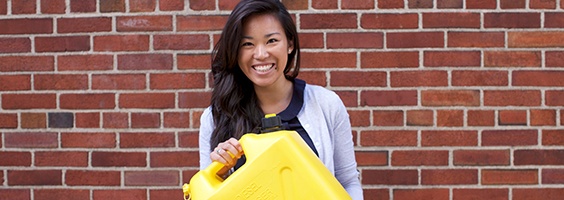
Thursday, May 2, 7:00-9:45pm
In The CSULB Design Department Duncan Anderson Gallery
Alyson Nakamura
Charity: Water
Embracing Iterative Design Principles to Build Meaningful Products and a Meaningful Career
Alyson is a designer based in New York City always seeking out the intersection of technology and social good. A self-taught designer, Alyson has designed for small agencies, midsize startups, and large companies like Expedia. She currently leads product design at charity: water, a nonprofit organization on a mission to bring clean and safe drinking water to every person on the planet. There, she focuses on the digital donor experience, including donating, fundraising, and reporting back on the incredible impact that supporters have.
Design iteration is most often discussed in relation to improved usability, better UX, and increased ROI. But at its core, iterative design pushes us to pursue a deep and honest understanding of the products we design and the users who encounter them. In this talk, I'll round up a series of case studies that illustrate how iteration fuels purposeful products and meaningful work.

Thursday, May 9, 7:00-9:45pm
In The CSULB Design Department Duncan Anderson Gallery
Graham Hanson
GHD Partners
C To Shining C
The American graphic design landscape today. How it is different and changing from the past. And what timeless principles still apply today.
Graham Hanson is the founder and president of GHD Partners, previously Graham Hanson Design. Since 1996, the multidisciplinary agency has been active in all areas of strategic visual communications for clients across the globe.
Graham studied at Iowa State University and at the Lorenzo de’ Medici Institute in Florence, Italy. Prior to founding GHD Partners, he was with Vignelli Associates, where he designed projects for the Guggenheim Museum in Bilbao, Spain and New York; a large-scale mixed-use retail complex in Kobe, Japan; and projects for Philip Johnson at The Museum of Modern Art.
His large-scale environmental graphic design highlights at GHD Partners include: American Institute of Architects/NY Awards Program, Carnegie Hall, General Motors Building, Google Headquarters (Multiple Locations), Holt Renfrew, Kuwait National Museum, Museum of Arts & Design Exhibitions, Panasonic, Saks Fifth Avenue OFF 5TH, and the Smithsonian American Art Museum.
In 2018, a 192-page monograph, titled “20/20”, was published by Visual Profile Press, showcasing the 20-year legacy of GHD Partners. The book, written by architect Roger Yee with introduction by design educator Jeff Bellantoni, illustrates 20 signature projects executed over the first 20 years of the firm.
He was an Associate Professor and thesis advisor in the Graduate Communications Design program at Pratt Institute from 1996 until 2016, and lectures on a variety of design-related issues. He has served on the Executive Committee of the American Institute of Graphic Arts/NY as vice president and currently is a member of the National Board of Directors for the Society of Environmental Graphic Design in Washington DC. A retrospective exhibition of his work, entitled “Breaking Boundaries/Expanding Limits”, was held at the Puck Building in Manhattan in 2001. He was the recipient of the 2002 Design Achievement award from Iowa State University. He frequently serves on design-related juries and his work has been featured by numerous national and international design organizations and publications.





